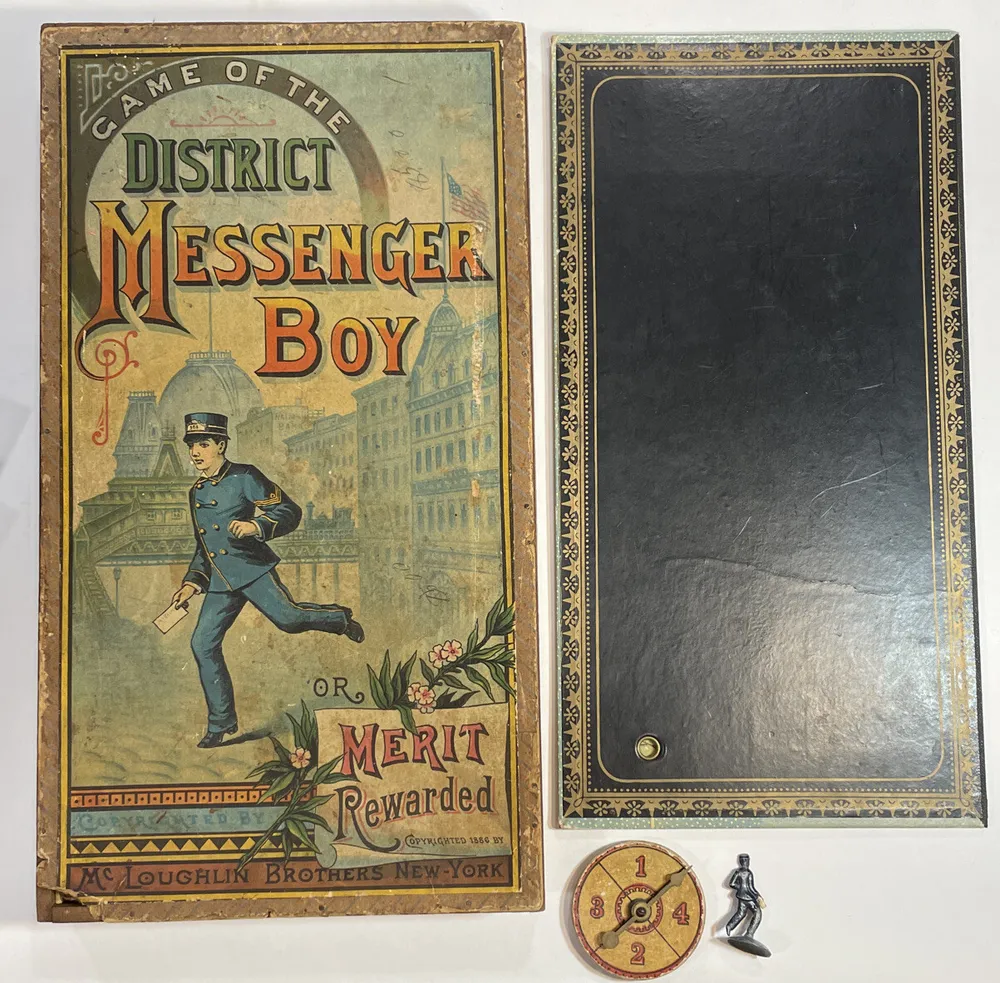The Game of District Messenger Boy (1886)
District Messenger Boy
“Game of the District Messenger Boy” is a board game that dates back to 1886. It was one of the first board games to insinuate competitive, materialistic board games, which culminated in 1935 with Monopoly. The game is a “spin-and-move” board game, where players spin an arrow and move their pawns accordingly. The objective is to see which player will first become the President of the Telegraph Company.
Why is District Messenger Boy Popular?
The game is significant because it bridges two eras of American history: the late 19th century and the early 20th century. It also emphasizes career advancement over moral improvement, which was a shift in the focus of board games during this time. The game is popular due to its simple mechanics and the fact that it was produced by the McLoughlin Brothers, a well-known game company in the late 19th and early 20th centuries.
Game Components of The Game of District Messenger Boy
How To Setup The Game of District Messenger Boy
To set up the game, players start by placing their tokens at the central depot on the game board. Each player receives a set of message cards, which outline the deliveries they need to make. The game board is laid out, showing the different locations around the city. The scoreboard is prepared to track each player’s progress.
Gameplay Mechanics and Game Objective
Player Experience
Playing The Game of District Messenger Boy involves a mix of luck, strategy, and time management. Players need to balance the risk of taking longer routes for higher rewards against the need to complete deliveries quickly. The game provides a simple yet engaging experience, making it accessible to a wide range of players.
Pros
Cons
Personal Thoughts on The Game of District Messenger Boy
The Game of District Messenger Boy is ideal for those interested in historical games or looking for a light, family-friendly experience. While it may not offer the depth and complexity of modern board games, it provides a charming and straightforward gameplay experience that can be enjoyed by players of all ages. For collectors and enthusiasts of vintage games, it is a unique addition to any collection, offering insights into the evolution of board game design.
We are supported by our audience. When you purchase through links on our site, we may earn an affiliate commission, at no extra cost for you. Learn more.

